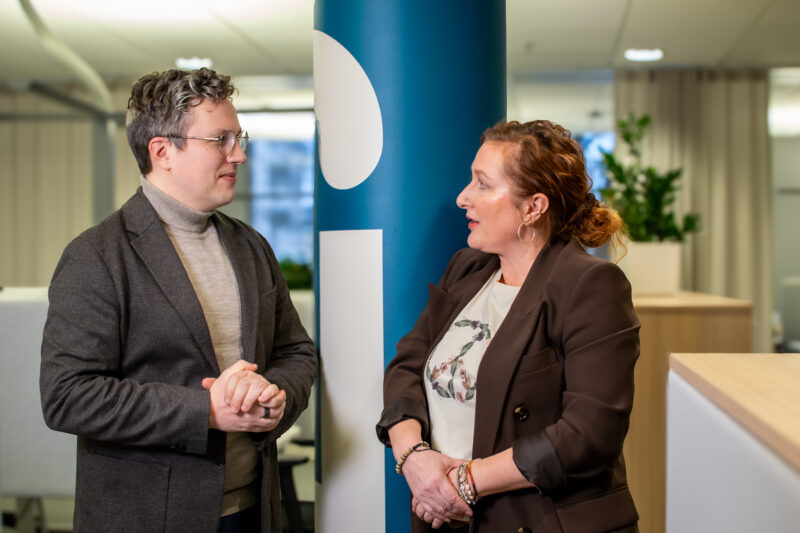From inclusion to participation – Can a small change ensure better results?
AI agents have the potential to revolutionise business productivity – but only if employees are active participants in the transformation, instead of passive recipients of change, remind Liisa Korkiakoski and Juha Kujala.
Imagine your team gets an assistant. What kind of tasks would you assign them?
The tasks you would choose to them would naturally depend on your team’s needs. The assistant could, for example, handle customer inquiries or analyse data from different projects and compile key insights into reports. What’s certain is that an assistant is most useful when the team itself gets to direct their work.
The same principle applies to AI agents. These agents integrate into the company’s business platforms and can be trained to independently handle various tasks that support the team’s and organisation’s processes and workflows. It is clear that choosing tasks for AI agents and training them cannot be the responsibility of executives, IT departments, or external consultants, as they don’t have an in-depth understanding of the team’s real needs.
Implementing AI agents is, in many ways, similar to recruiting and onboarding a new employee. Part of the process even involves evaluating the agent’s performance. The team lead is responsible for monitoring how the new AI employee performs, providing additional training if needed, or in the worst-case scenario, terminating the AI agent’s role before the trial period ends.
Allocate resources for involving employees
Last fall we conducted a market study on technology projects in Finnish companies. The study revealed that only about one-fifth of the companies had involved their employees in central roles in the project – even though they were the ones whose daily work was most affected by the new technology. Not coincidentally, only about one-fifth of executives reported that their technology investments had resulted in significant productivity gains.
The AI revolution has now entered a phase where technology doesn’t just enable small productivity improvements. AI agents offer the potential for a massive leap, even a multiplication of productivity.
Decisions about technology investments aimed at achieving this leap are strategic and should be made at the executive level. Leadership’s role is to set clear, measurable objectives for these projects.
However, painting the picture within those strategic frames is the responsibility of employees. In other words, the people using the technology daily must have a say in how it is implemented – especially when it comes to independently functioning AI agents.
Finnish companies have become familiar with the concept of inclusion, but too often, it is only symbolic. The majority of technology project budgets go toward acquiring and implementing the technology, while little time and money are allocated for engaging employees and developing their skills.
For companies to take a true productivity leap, employees working with the technology must be active participants in the change, not just passive recipients.
Employee well-being is also a source of productivity
It isn’t enough for management to include employees – they need to be active participants. Employees should not just be informed about changes; they must be involved in designing them from the start, and their skills must be continuously developed as the change progresses.
New technology always demands new skills and a new culture in the organisation. Just like adopting AI agents, every change initiative is also sort of an HR process, in which employees play a key role in implementation and monitoring the results in real-time.
If a company wants to radically improve productivity, it must involve employees in building the transformation. This requires a new culture of learning and participation.
Transformation projects should not be seen as isolated initiatives but as part of the organisation’s continuous evolution. Just as technology needs management, so do people and their skills.
At the start of transformation projects, there is often resistance to change and even fear. The most effective response? Participation and training. As the project progresses, self-leadership and change management skills may become critical. Paying attention to employees’ well-being and mental health is not just a soft concern, it’s also a concrete way to reduce staff turnover and increase productivity.

Download the steps for a productivity leap
This blog series explores four key strategies to unlock hidden productivity potential in your company. Employee participation in transformation is one of them. Previous articles have covered raising the bar on goals and breaking down organisational silos. Next, we’ll discuss enhancing your company’s organic change capability.
Find the steps for a productivity leap in our market study report – download it here.
About the authors
Liisa Korkiakoski is the CTO of Sofigate Academy. She believes that learning is not just necessary – it can and should also be fun. Liisa has extensive experience in business technology leadership, skill development, and strengthening organisations’ change capabilities.
Juha Kujala is the CTO of Sofigate’s Platforms business. His professional passion is helping organisations towards better services by leveraging the potential of new technologies. Juha has extensive expertise in the ServiceNow platform and service development management.


